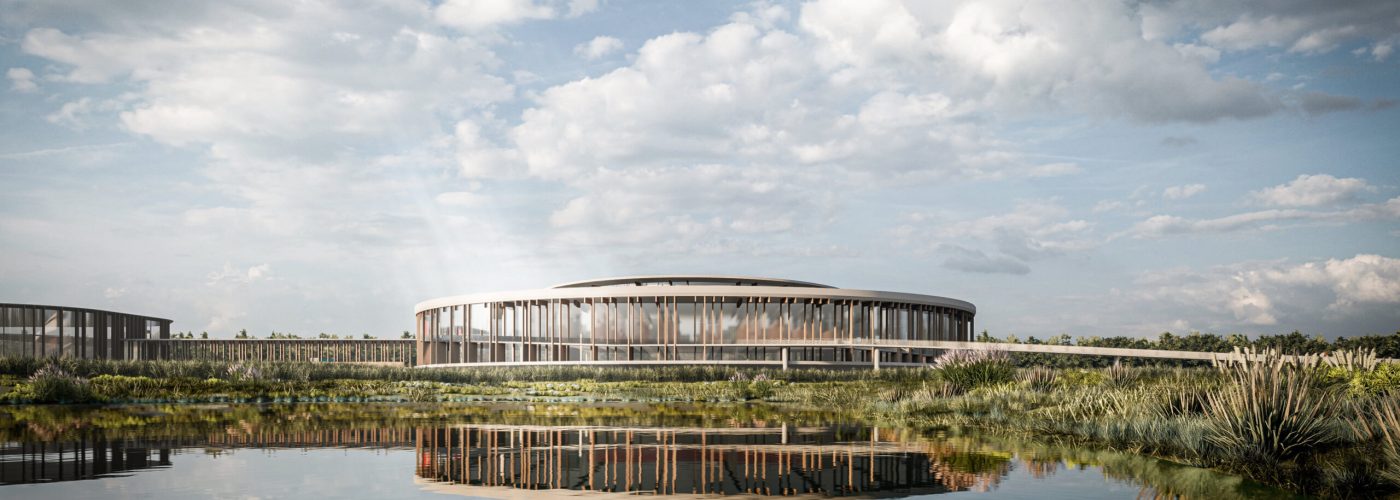Hollaway Studio has designed a pioneering new global headquarters and factory in Ashford, Kent for Brompton, the UK’s largest bicycle manufacturer.
Aiming to open in 2027, the state of the art building will be situated within 100 acres of unused wetlands, 60 acres of which will be transformed by Ashford Borough Council into a rewilded public nature reserve and community cycle path with sustainability at its heart.
The building is circled by a publicly accessible cycleway which weaves in and out of the building, providing both expansive views of the site and multisensory experiences of the factory processes along the route. The journey ends at the roof, where a Brompton Museum, recreational areas and a shared canteen for both workers and visitors alike can be found.
A true 21st Century Bourneville, the factory will merge the public and private domains of industry through permitting the public to view not only how Brompton bikes are manufactured but to reveal and educate how industry works – a rarity in such settings and something that will position it firmly within the community.
Challenging the traditional perception of manufacturing, Hollaway has designed the factory to work in harmony with and become part of its natural surroundings, sustainability will be at the heart of the carbon-neutral facility which will draw heat from the ground, utilise natural light and air flows and harness the power of the site’s wind and sun exposure to contribute to energy demands. The footprint of the building and the impact on the surrounding wetland has been kept to a minimum by housing the events spaces, museum, canteen, and terrace upon the roof.

Just like a Brompton bike, the factory will be built to last, with construction methods examined, embodied carbon explored and materials responsibly sourced to ensure the site can enable future adaptation and be resilient to the changing climate. Through its design, Hollaway highlights the possibility of making industry clean and giving back to nature. Positioned 2.2m above the wetlands, the building appears to float as it coexists with the wetlands below, allowing water levels to rise and fall throughout the year. This is aided by a reinforced floorplate, supported by foundation piles which also serve to draw heat from the ground.
Created to realise Brompton’s future ambition of producing over 200,000 bikes per year, by 2027, Brompton expects to employ over 1,500 staff. Hollaway’s design acknowledges Brompton’s tremendous growth over the last 5 years. The new Ashford factory is perfectly located between the leading cycling cities of London and Paris, to enable their future ambitions and to continue to transform the way that people move in cities around the world.
Brompton will partner with Ashford Borough Council and Quinn Estates for the development and will invest in the local community through the creation of skilled worker roles and the visitor centre at the factory, including the museum and educational space to facilitate active outreach to local schools.
Brompton has held a relationship with Ashford since 2014 as one of the first Brompton Bike Hire docks was installed at Ashford International Station, which will be expanded as part of the plans. Brompton’s current factory in Greenford, West London will continue to operate until at least 2030.





